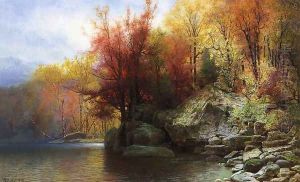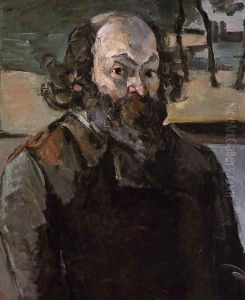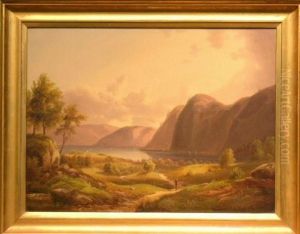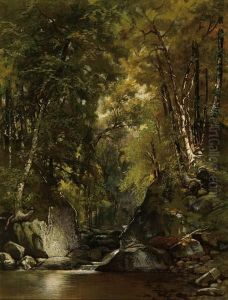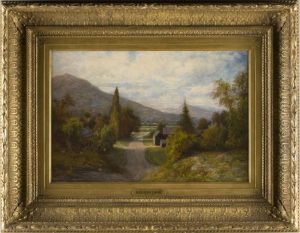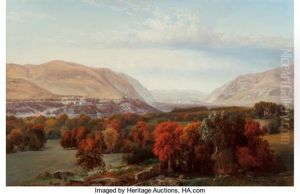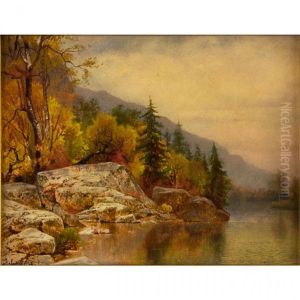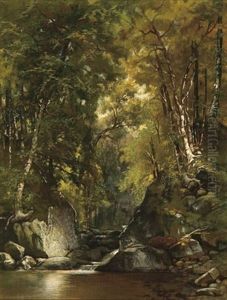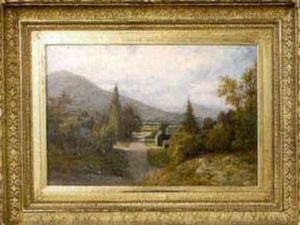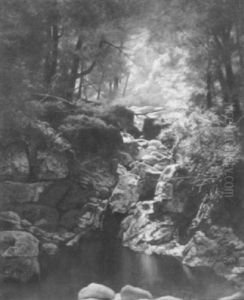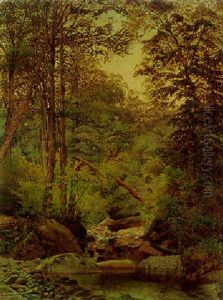Alexander Lawrie Paintings
Alexander Lawrie was a Scottish-American artist born in 1832 in Earlston, Scotland. Before emigrating to the United States, Lawrie received his initial art education in Scotland. His journey across the Atlantic was part of a larger wave of 19th-century European migration, and it ultimately led him to settle in the United States, where he continued his engagement with the art world. Lawrie's life spanned a period of significant change and development in the art world, both in Europe and America, and his work reflects the transitions and influences of those times.
After arriving in the United States, Lawrie became an active participant in the American art scene. He spent a significant portion of his career in Pennsylvania, a state known for its vibrant art community and institutions. During his time in America, Lawrie engaged with various artistic mediums but is primarily remembered for his contributions to painting. His style was influenced by the prevalent artistic movements of his time, incorporating elements of realism and impressionism. Lawrie’s subjects varied widely, including landscapes, portraits, and historical scenes, showcasing his versatility as an artist.
Throughout his career, Alexander Lawrie was involved in the American art community, contributing to its institutions and exhibitions. He exhibited his work at various prestigious venues, including the Pennsylvania Academy of the Fine Arts, an institution known for its role in promoting American art and artists. Lawrie's contributions to the art world were recognized by his peers and the public, and his works were appreciated for their technical skill and emotive qualities.
Alexander Lawrie's legacy as a Scottish-American artist is marked by his adaptation and contribution to the American art scene of the 19th and early 20th centuries. His life and work serve as a bridge between his Scottish heritage and his American experience, reflecting the broader story of cultural exchange and influence that characterized the period. Lawrie passed away in 1917, leaving behind a body of work that continues to be studied and appreciated for its historical and artistic value. His journey from Scotland to America and his contributions to the art world on both sides of the Atlantic highlight the interconnectedness of the global art community during a period of significant evolution.
